MAA-Michigan MichMATYC Spring Meeting: May 7-8, 2010
Please Join Us At Eastern Michigan University
(Preliminary Program Now Available)
MAA-Michigan is pleased to announce a stellar lineup of invited speakers. We are very fortunate to have David Bressoud, President, MAA, Macalester College, opening the conference with “Issues of the Transition to College Mathematics. An excellent complement to this presentation will be offered by Sheldon Gordon, Farmingdale State College, entitled "The Mathematics the Partner Disciplines Want and our Students Need".
A special feature this year will be a presentation by Tim Chartier, Davidson College, “Mime-matics” and later, after dinner, Tim will again entertain us with "March Mathness".
On Saturday, the opening presentation will be from Maria Andersen, President MichMATYC, Muskegon C.C. Her presentation will be "Math Technology to Engage, Delight, and Excite”. Finally, following lunch, Annalisa Crannell, Franklin & Marshall College, will engage us with "Math and Art:The Good, the Bad, and the Pretty".
Sharing of ideas and projects are formally done in the contributed paper sessions. This year we are scheduling a special technology strand that we know will be informative and demonstrate how our colleagues across the state are incorporating technology to engage students in their mathematics classes and research.
As usual, student activities are an integral part of the Spring meeting. Contributed talks by students are scheduled for both days.This year we hope to expand on the number of talks and activities for our student guests. We encourage our members to invite and bring students.
There will be ample time to meet and greet old and new friends from around the state and compare notes. This is one of the major benefits of these meetings. Book publishers, including the MAA, will have displays in a large area devoted to browsing, breaks, and socializing.
A special feature this year will be a presentation by Tim Chartier, Davidson College, “Mime-matics” and later, after dinner, Tim will again entertain us with "March Mathness".
On Saturday, the opening presentation will be from Maria Andersen, President MichMATYC, Muskegon C.C. Her presentation will be "Math Technology to Engage, Delight, and Excite”. Finally, following lunch, Annalisa Crannell, Franklin & Marshall College, will engage us with "Math and Art:The Good, the Bad, and the Pretty".
Sharing of ideas and projects are formally done in the contributed paper sessions. This year we are scheduling a special technology strand that we know will be informative and demonstrate how our colleagues across the state are incorporating technology to engage students in their mathematics classes and research.
As usual, student activities are an integral part of the Spring meeting. Contributed talks by students are scheduled for both days.This year we hope to expand on the number of talks and activities for our student guests. We encourage our members to invite and bring students.
There will be ample time to meet and greet old and new friends from around the state and compare notes. This is one of the major benefits of these meetings. Book publishers, including the MAA, will have displays in a large area devoted to browsing, breaks, and socializing.
Invited Speakers
David Bressoud - President, MAA - Macalester College
Friday, May 7: Opening Plenary Session.
“Issues of the Transition to College Mathematics”
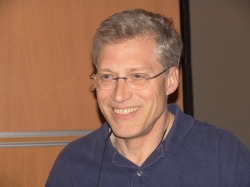
Over the past two decades, the number of students studying calculus in high school has exploded. Last year it reached almost 600,000, 1/3 of the students who each year go directly from high school into a 2- or 4-year college. This phenomenon has created both problems and opportunities as these students enter college mathematics. I will talk about what we know about what is happening and what we need to learn. I will also explain the innovative responses we have put in place at Macalester College.
Sheldon Gordon - Farmingdale State College
Friday, May 7
“The Mathematics the Partner Disciplines Want and our Students Need”
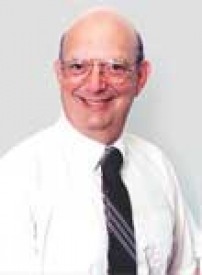
The overwhelming bulk of our students, especially in courses below calculus, are there because of requirements from other disciplines or college-wide requirements. Leading educators from the partner disciplines, through the MAA”s Curriculum Foundations Project, almost unanimously recommend mathematics that has a very different flavor from what mathematics department tend to offer that is focused on the mathematics major. This talk will provide an overview of the mathematics that the partner disciplines actually use, and hence what their students really need, from our courses. If we are to support those other departments, maintain our enrollments, and provide courses that are beneficial to all of our students, we need to pay attention to what the other disciplines want.
Tim Chartier - Davidson College
Friday, May 7: First of two presentations-
“Mime-matics”
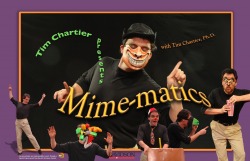
In Mime-matics, Tim Chartier explores mathematical ideas through the art of mime. Whether creating an illusion of an invisible wall, wearing a mask covered with geometric shapes or pulling on an invisible rope, Dr. Chartier delves into mathematical concepts such as estimation, tiling, and infinity. Through Mime-matics, audiences encounter math through the entertaining style of a performing artist who have performed at local, national and international settings.
Tim Chartier is an Associate Professor of Mathematics at Davidson College. He is a recipient of the Henry L. Alder Award for Distinguished Teaching by a Beginning College or University Mathematics Faculty Member from the Mathematical Association of America. As a researcher, Tim has worked with both the Lawrence Livermore and Los Alamos National Laboratories on the development and analysis of computational methods to increase the efficiency and robustness of numerical simulation on the lab's supercomputers, which are among the fastest in the world. Tim's research with and beyond the labs was recognized with an Alfred P. Sloan Research Fellowship. As an artist, Tim trained at Le Centre du Silence mime school and Dell'Arte School of International Physical Theater. His training also includes several master classes with Marcel Marceau. He has performed throughout the United States and in national and international settings.
Tim Chartier is an Associate Professor of Mathematics at Davidson College. He is a recipient of the Henry L. Alder Award for Distinguished Teaching by a Beginning College or University Mathematics Faculty Member from the Mathematical Association of America. As a researcher, Tim has worked with both the Lawrence Livermore and Los Alamos National Laboratories on the development and analysis of computational methods to increase the efficiency and robustness of numerical simulation on the lab's supercomputers, which are among the fastest in the world. Tim's research with and beyond the labs was recognized with an Alfred P. Sloan Research Fellowship. As an artist, Tim trained at Le Centre du Silence mime school and Dell'Arte School of International Physical Theater. His training also includes several master classes with Marcel Marceau. He has performed throughout the United States and in national and international settings.
Tim Chartier - Davidson College
Friday, May 7: Second of two presentations-Dinner
“March Mathness”
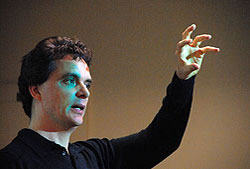
Every year, people across the United States predict how the field of 65 teams will play in the Division I NCAA Men's Basketball Tournament by filling out a tournament bracket for the postseason play. This talk discusses two popular rating methods that are also used by the Bowl Championship Series, the organization that determines which college football teams are invited to which bowl games. The two methods are the Colley Method and the Massey Method, each of which computes a ranking by solving a system of linear equations. We also touch on how to adapt the methods to take late season momentum into account. We also see how the methods did in creating mathematically-produced brackets for 2010 March Madness.
Maria Andersen - President, MichMATYC - Muskegon CC
Saturday, May 8: Opening Plenary Session.
“Math Technology to Engage, Delight, and Excite”

We’re in a recession and so is your department budget. Luckily for you, there are lots of great programs and web resources that you can use to teach math, and most of these are free. Use the resources in this presentation to tackle the technology problems that haunt you and capture the attention of your math classes with interactive demonstrations and relevant web content.
Maria H. Andersen teaches math at Muskegon Community College and has a passion for helping other faculty learn how to "be dangerous" with technology and relate to the Internet generation. Maria is the President of MichMATYC and the AMATYC Technology Strand Traveling Workshop Director. You may have stumbled across Maria blogging on the Internet at the website TeachingCollegeMath.com.
Maria H. Andersen teaches math at Muskegon Community College and has a passion for helping other faculty learn how to "be dangerous" with technology and relate to the Internet generation. Maria is the President of MichMATYC and the AMATYC Technology Strand Traveling Workshop Director. You may have stumbled across Maria blogging on the Internet at the website TeachingCollegeMath.com.
Annalisa Crannell - Franklin & Marshall College
Saturday, May 8, Lunch
“Math and Art: The Good, the Bad, and the Pretty”
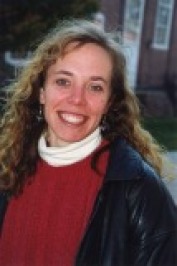
Dust off those old similar triangles, and get ready to put them to new use in looking at art! We're going to explore the mathematics behind perspective paintings---a mathematics that starts off with simple rules, and yet that leads into really lovely, really tricky mathematical puzzles. Why do artists use vanishing points? What's the difference between 1-point and 3-point perspective? Why do your vacation pictures not look as good as the mountains you photographed? We'll look at all of these questions, and more.
Annalisa Crannell is a Professor of Mathematics at Franklin & Marshall College and past Governor of the MAA-EPADEL section. Her primary research is in topological dynamical systems (also known as "Chaos Theory"), but she also is active in developing materials for courses on Mathematics and Art. She has worked extensively with students and other teachers on writing in mathematics, and with recent doctorates on employment in mathematics. She especially enjoys talking to non-mathematicians who haven't (yet) learned where the most beautiful aspects of the subject lie.
Annalisa Crannell is a Professor of Mathematics at Franklin & Marshall College and past Governor of the MAA-EPADEL section. Her primary research is in topological dynamical systems (also known as "Chaos Theory"), but she also is active in developing materials for courses on Mathematics and Art. She has worked extensively with students and other teachers on writing in mathematics, and with recent doctorates on employment in mathematics. She especially enjoys talking to non-mathematicians who haven't (yet) learned where the most beautiful aspects of the subject lie.
Locally Invited Speakers
Steve Blair - Eastern Michigan University
Saturday, May 8
“Solving The Puzzle – Using Directed Graphs to Motivate Functions in High School and College Algebra Classrooms”
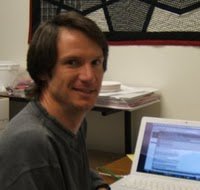
Greg Budzban, a mathematician working with The Algebra Project (founded by Bob Moses), has written a module called Road Coloring based on concepts from graph theory. I will discuss using this module with ninth grade algebra students at Ypsilanti High School as well as adapting it for use with college students in my Algebra for Elementary Teachers course at Eastern Michigan University.
David Redman-Delta College
Friday, May 7 and Saturday May 8
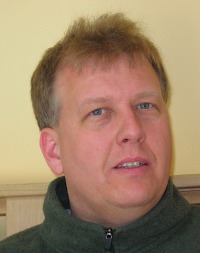
“Elements of Good Math Videos”
You have many good presentations in your lectures, slides, handouts and activities. Now you want to present them as online videos for students to consume at their own pace. How do you make the transition from a presentation to a video? We will show you some tools and rules, what to do and what not to do.
SpaceTime ...
... The Final Frontier
These are the voyages of the computer algebra system SpaceTime. Its continuing mission: to explore strange new surfaces, to seek out new factors and new animations, to boldly go where no CAS has gone before - phone, PDA, iPod, computer! Let's see $20 app with lightning-fast color graphics versus $150 dot-matrix inspired calculator, analysis Spock?
You have many good presentations in your lectures, slides, handouts and activities. Now you want to present them as online videos for students to consume at their own pace. How do you make the transition from a presentation to a video? We will show you some tools and rules, what to do and what not to do.
SpaceTime ...
... The Final Frontier
These are the voyages of the computer algebra system SpaceTime. Its continuing mission: to explore strange new surfaces, to seek out new factors and new animations, to boldly go where no CAS has gone before - phone, PDA, iPod, computer! Let's see $20 app with lightning-fast color graphics versus $150 dot-matrix inspired calculator, analysis Spock?
Andrew Ross Eastern Michigan University
Friday, May 7
“Applied Queueing Models, and Teaching Math Modeling with Individual Projects”
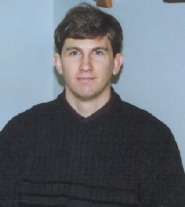
This talk will be split in two halves. First, I will discuss how basic queueing models can give us insight into situations like call centers and health care waiting times. Then, I will relate my experiences in requiring students in my math modeling classes to do projects based on their own interests. I will discuss how I guide students in selecting topics, how I help them in writing up their results and giving presentations, and the grading rubric I use.
Pat Shure - University of Michigan-Ann Arbor
Taking Symbols Seriously: Teaching Form and Function in College Algebra
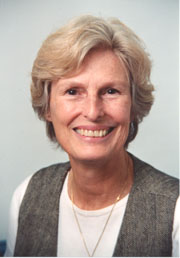
Since many students taking College Algebra courses have seen the topics before, they often find it easier to ignore the underlying structure and focus instead on acquiring a surface knowledge of manipulations. Unfortunately, the fluency they seek often eludes them precisely because they fail to recognize the underlying algebraic form and the purpose of different forms.
To use algebra effectively, students need ‘symbolic literacy,’ the ability to analyze the form
of an expression, employ algebraic foresight, and choose the appropriate manipulation. This presentation will be centered on a set of problems that provide a framework for by helping students achieve both conceptual understanding and procedural fluency.
To use algebra effectively, students need ‘symbolic literacy,’ the ability to analyze the form
of an expression, employ algebraic foresight, and choose the appropriate manipulation. This presentation will be centered on a set of problems that provide a framework for by helping students achieve both conceptual understanding and procedural fluency.
Brian Yurk - Hope College
Friday, May 7
“Modeling the evolution of insect development time in response to climate change”
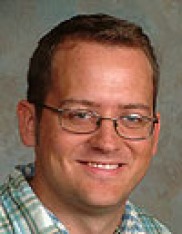
Since developmental timing in insects is temperature-dependent, it is likely that climate change will result in dramatic changes in insect populations. In these populations, there are strong selective pressures for maintaining appropriate developmental timing. To survive to maturity, insects must avoid coincidence of sensitive life stages with extreme weather while maintaining overlap with resource availability. The degree to which development is synchronized in a population can also have important fitness consequences, determining the probability of finding mates, the likelihood of avoiding predators, and the ability to overwhelm prey. As climate changes, populations that are well-adapted to local climate conditions will be forced to migrate, evolve, or go extinct.
In this talk, I will present a mathematical model of the evolution of temperature-dependent development time in response to selection on emergence time and density in insect populations. Steady distributions for the model under stable temperatures are determined using asymptotic methods. In numerical simulations, the existence of these distributions determines population dynamics under warming temperatures as well. The model is applied to predict population dynamics and evolution of development time in mountain pine beetle (MPB) populations under warming temperatures. Recent MPB range expansion and increased outbreak frequency have been linked towarming temperatures. The MPB is an important insect from both an ecological and an economic perspective, because its outbreaks often result in massive timber loss.
In this talk, I will present a mathematical model of the evolution of temperature-dependent development time in response to selection on emergence time and density in insect populations. Steady distributions for the model under stable temperatures are determined using asymptotic methods. In numerical simulations, the existence of these distributions determines population dynamics under warming temperatures as well. The model is applied to predict population dynamics and evolution of development time in mountain pine beetle (MPB) populations under warming temperatures. Recent MPB range expansion and increased outbreak frequency have been linked towarming temperatures. The MPB is an important insect from both an ecological and an economic perspective, because its outbreaks often result in massive timber loss.
Paul Yu - Grand Valley State University
Saturday May 8
“Cats, Dogs, and Mathematics: Semiotic and Prototype Theory in the Mathematics Classroom”

Semiotics as a discipline is the analysis or study of signs and sign systems. According to linguist Ferdinand de Saussure, a sign is a two part entity consisting of a signifier (symbol) and its signified (meaning). As such, the terms “cat,” “dog,” and “exponential function” are meaningless without the necessary experiences to give the terms meaning to a person. Prototype theory is a field of cognitive science that looks at the manner by which humans categorize certain phenomenon. For instance, a retriever may be more dog-like than great dane, or certain examples of rectangles may be more rectangular-like than others. In this talk, I will describe the basic tenets of Semiotic and Prototype theory and share how I have used these theories in my research of collegiate students’ understanding of mathematics as I reflect on two classroom research projects. One project was conducted in a 200 level mathematics course for pre-service elementary education majors, and the other was conducted in a 400 mathematics course in non-Euclidean geometry. I will then share some possible implications of these learning theories for instruction in mathematics.